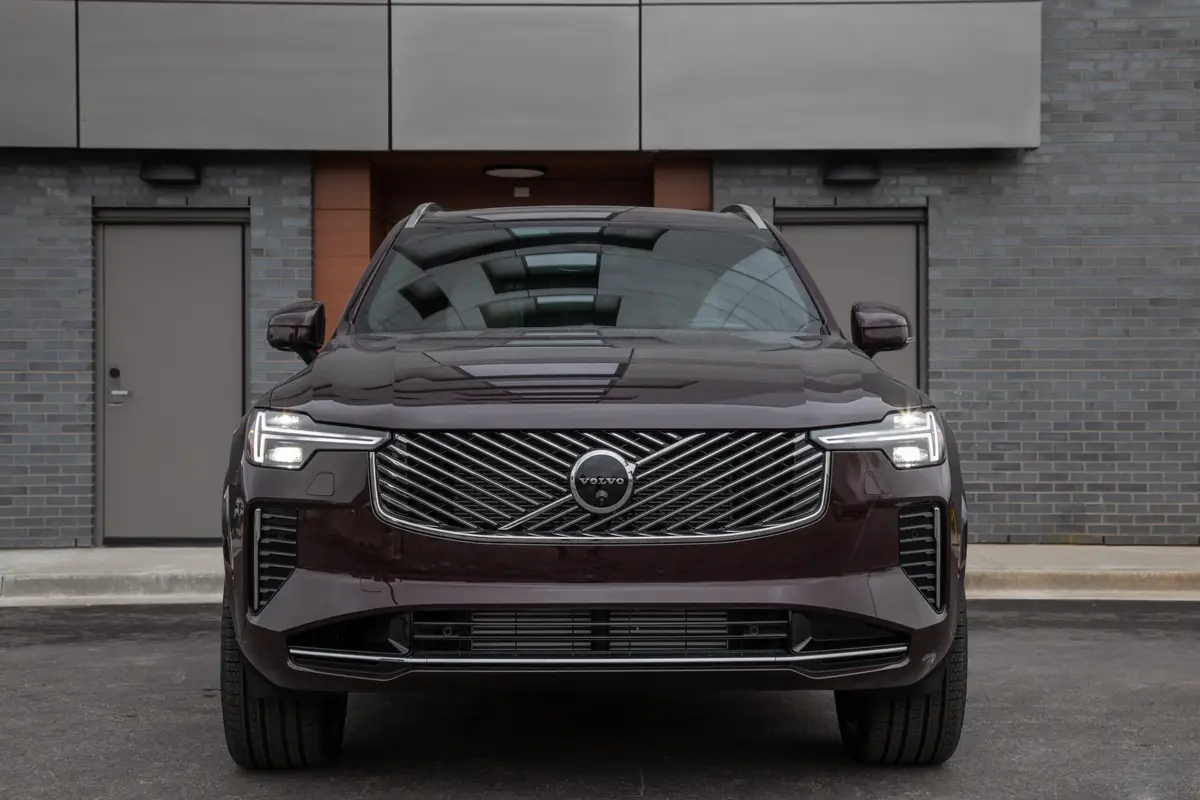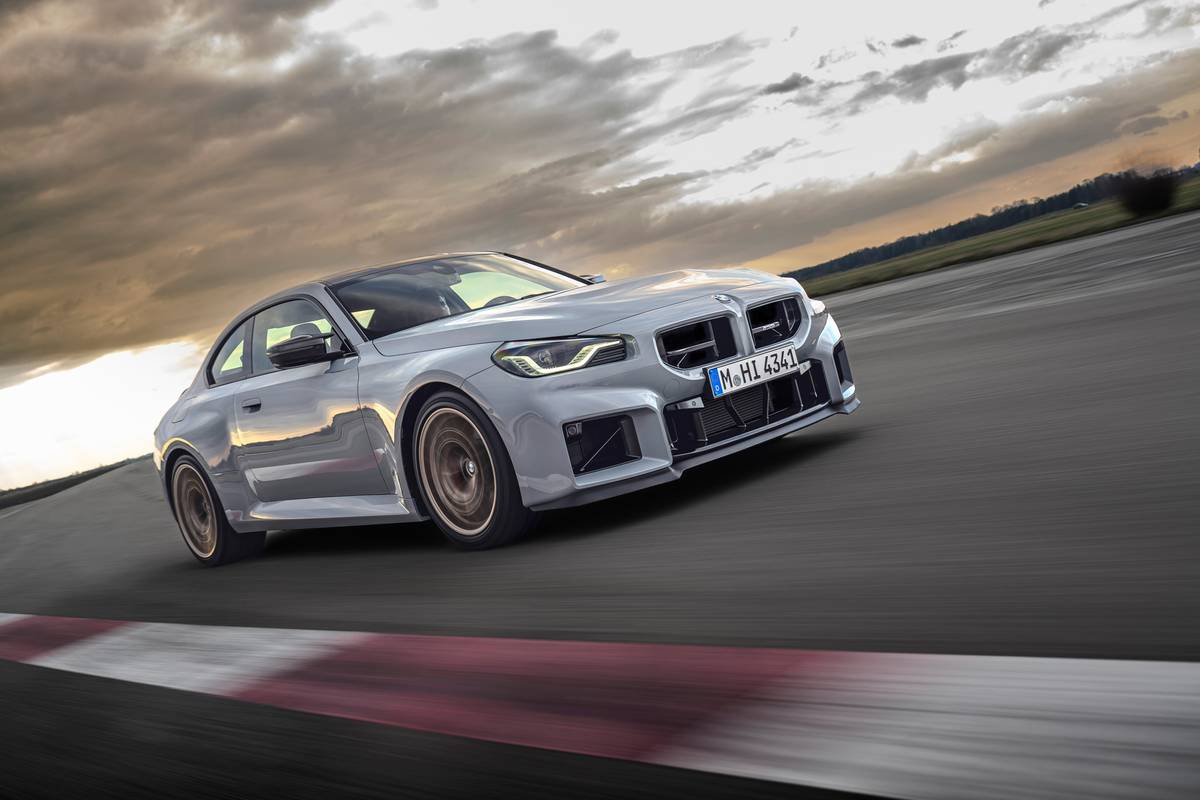The Morning Call and Mcall.com's view
The interest in European sports sedans in this country has become very strong over the past couple of years. So strong, in fact, that just about every automaker on the block is building at least one. And the automakers are by no means restricted to Europe. United States car builders are producing them as if they invented the genre; and Japan, after waiting to see which way the divine wind was blowing, also jumped into this popular and lucrative market.
But every once in a while the Europeans do bring out a new sports sedan. And since the Continent was where it all began, it shouldn’t come as any big surprise that this latest offering is a car that will interest the driving ”enthusiast” – both the true hotshoe driver and the driver who wants to look like one. It is, in many ways, a snobby market. But whether you are buying such a car to impress yourself or your peers, it still can be appreciated on its own merits.
One of the newest of the European sports sedans is a turbocharged gasoline engine version of Peugeot’s 505 model, known appropriately enough as the 505 Turbo. The 505 has been in the Peugeot lineup for a couple of years and available in naturally aspirated gasoline and turbocharged diesel engines. But the 505 Turbo takes the car up to the higher performance end of European sports sedans, which is a good place to be these days with the renewed interest in performance.
Although Peugeot is one of the oldest and largest automakers in the world, you wouldn’t be able to tell it in this country. Here’s a company that built its first car back in 1889, and last year (together with its subsidiary Citroen) produced more than two million vehicles. Yet it only sold about 20,000 cars in the United States last year, which is why you don’t see one on every corner. Peugeot is not new to this country. The first model sold in the American market was the 403 Sedan, introduced in April, 1958. The 403 was an attractively styled car, which is saying quite a bit since it came from a country that, until that time, never placed a high priority on styling. In fact, the 403 could be considered the first French car that didn’t look as if warts came as standard equipment.
Even today, styling is an important consideration for Peugeot. The 505 is one of the best-looking of the European sport sedans. The test car – supplied by J.H. Bennett, Inc., 2300 Hanover Ave., Allentown of the 505 was created in the studios of famed Italian designer Pininfarina. The two strong points of the 505 styling are its roof and front end: The roof features thin pillars, spacious glass surfaces and a broad roofline; while in front there is a sloping hoodline, flanked by rectangular headlamps, that blends into the distinctive Peugeot grille. The Turbo’s rear deck has an added-on spoiler that may not add anything significant, but at least it doesn’t distract from the overall design. In all, th e 505 is subtly styled.
The 505 Turbo is rated as a compact car with a wheelbase of 108 inches; length, 186.7 inches; width, 68.3 inches; height, 56 inches, and curb weight, 3,130 pounds. It is a five-passenger car and, even with the front seats extended fully aft, rear seat passengers will have ample leg room. They would, of course, be much happier with the front seats extended only halfway back. The driver’s seat is adjustable in eight directions, which means that most persons shouldn’t have any trouble fitting in. A sunroof does come as standard equipment and, as all sunroofs do, it does cut down on head room. This, however, should not be a problem unless you are extremely tall. In that case, slouch. The overall comfort level of the interior is a bit above average.
The 505 Turbo is not really the type of car anyone can jump into and drive. It is definitely a car where you do have to read the manual first. This isn’t so much for driving the car itself – s eering wheel and clutch, brake and accelerator pedals aren’t any different from any other car – but rather knowing how to operate the controls. Lights and wiper controls aren’t any better or worse than any other car but they are different. In typical French fashion, the horn is mounted on the turn signal/lights stalk and is activated by pushing in the end. Heater/air conditioning controls and symbols also march to the beat of a different drummer. Again, read the manual first. Instruments and warning lights, however, are straightforward.
All Peugeots are good-handling cars – and this one is no exception. The Turbo’s four-wheel independent suspension has been tuned finer to handle the extra power. Front suspension features modified MacPherson struts, while the rear has semi-trailing arms – and both ends have sway bars. There are also specially-tuned, eight-valve double-acting shock absorbers that, in the words of Peugeot, insure precise track and flat cornering. Other standard features include limited-slip differential, power four-wheel disc brakes and Michelin MXV 195/60HR15 tires on aluminum alloy 15-inch wheels.
Steering is by rack-and-pinion, which is really no big deal these days. But it is very, very tight steering. The leather-covered steering wheel turns lock-to-lock in three quick turns. And since there is no play in the steering, you do have to pay attention. This is definitely not the type of steering for someone who likes to daydream. You move that steering wheel a little, and the 505 Turbo moves a lot. Here’s one car you have to aim carefully.
But once you get used to the tight steering, you’ll find the 505 Turbo is ready to do what you want it to – whether you like to run the back roads or do some highway cruising. The test car was particularly impressive in the rain and wind. It just didn’t stray from its course, even when passing or being passed by tractor trailers. Even with all of this suspension, the ride was acceptable – that is, for a sports sedan.
The 505 Turbo is powered by a four-cylinder engine that measures 131 cubic inches (2.2 liter) rated at 142 horsepower at 5,600 rpm and 163 foot pounds torque at 3,800 rpm. It gets all this zip from a Garrett TB03 turbocharger producing 8.85 pounds of boost pressure and, to a lesser degree, a Bosch LU- Jetronic digital fuel-injection system. This engine is known as the N9T and, while it is new this year in the United States, it was introduced last year in the European version of the car. (In racing trim, this engine made its competition debut with a first-place victory at the European production car championships in Hockenheim, Germany.)
This engine has hemispherical combustion chambers, an overhead cam, cast iron block and aluminum alloy cylinder head. It is fitted with molybdenum- segment pistons, sodium-filled exhaust valves and stainless steel exhaust. The crankcase is forged from a single st eel billet, connecting rods are also forged steel and the overhead camshaft is driven by a duplex chain with automatic tensioner. It really isn’t that much different from other turbo engines but it certainly does sound impressive.
Mid and upper end performance is quite good, but the 505 Turbo is no zinger off the line. I don’t think it was meant to be but I want to mention this up front. In addition to low speed turbo lag, the gearing of the five- speed manual transmission (standard and only box) is strictly for high- speed running. For example, first gear has a stump-pulling 3.86:1 ratio and it has to make a big jump to a second gear of 2.18:1. After this, things seem to be fine with a third gear of 1.44:1, fourth of 1.00:1 and a fifth with an overdrive ratio of 0.84:1. Play the transmission right and the 505 Turbo should go from 0-60 mph in a bit over 10 seconds. Certainly not bad but not startling. Peugeot claims a top speed of 119 mph, which is a giveawa to where the gearing is.
The test car averaged 15 miles per gallon for city driving and 23 mpg over th e highways. Decent but not exceptional. This car does require unleaded premium.
The 505 Turbo is one of those complete cars. The manufacturer’s retail price is $18,150 and includes a long list of standard equipment, the most notable being air conditioning, power sunroof, power windows, cruise control, central locking system, electrically controlled and heated sideview mirrors and, for those cold mornings, heated front seats. The only other charge on the test car was a destination charge of $325, which brought the price up to $18,475.
Latest news



